Quick Fibre Laser Welder Quote
Customer Quotation Form
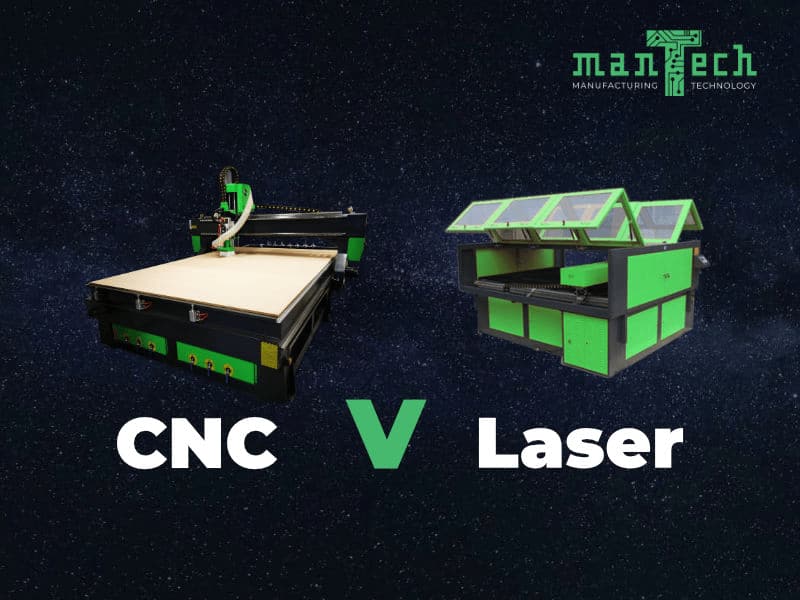
We have been asked this question many times from our customers wanting to know which type of machine to use within their business. In some cases, there is a case for having both, but we’ll concentrate on the main differences between CNC routers and laser machines.
For some of you reading this article, you may not know how each of these machines works, let’s fix this first, for those of you who are fully aware of how each machine works, skip ahead by all means.
Let’s start with CNC router machines.
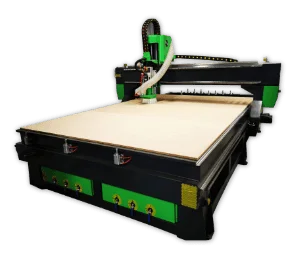
Often a CNC router consists of a sturdy metal framework that has been tested under stress conditions for proper rigidity and strength. The frame will have a phenolic bed with a matrix pattern routed out which enable the connected vacuum pump and filter system to hold down a sacrificial layer (MDF) which in turn holds your material via a negative pressure vacuum.
These CNC machines are often called goalpost CNC routers because they also have a gantry or ‘bridge’ which is raised at either side to enable it to move across linear rails in a backwards and forwards motion.
Connected to the gantry or bridge you will then have the head which moves left and right across similar linear rails, both movements give you your X and Y-axis. Connected to the head you will also have the heart of any CNC Router system, the spindle. Combined with the X & Y movement the Spindle is usually fixed to a Z-axis rail that enables the spindle to move in your up/down positions, these types of CNC router are also known as 3 axis CNC’s because they move in X, Y and Z.
Usually configured in a 3-phase mode for the best possible performance, however, they can be produced in single-phase where a 3-phase supply is not available.
Driven by motors with options such as a stepper, hybrid or servo drives, enabling high-speed movement of the gantry (bridge) across the material being cut. A very quick note on this, your speed of cutting will be dictated by material thickness, type and the tools you use.
A CNC router can process a multitude of material types such as:
They are also provided with an extraction system to lift away the swarf cut from your materials.
Some CNC routers have hand control units whereas others will use PC based systems to control the input and output of the machine. Alongside this there is a need for CAD/CAM software to design your file, apply toolpaths to it (so the CNC knows what speed and depth to cut or engrave) and export the gcode for the machine to read the set of co-ordinates so it knows where to process on your sheet of material. This may sound daunting at first, but you should receive training on the use of your new machine for both the software and the safe operation of the CNC router.
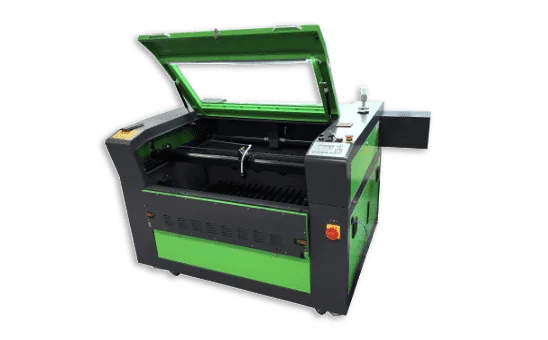
CO2 Laser cutter and engraving machines are a very versatile machine, able to cut and engrave an array of materials such as acrylic, wood, card, paper, fabric, leather, rubber and much more. You do have to be careful with what you try to cut with a laser:
The materials above can, due to their chemical makeup, create dangerous dust or gasses.
CO2 laser machines are built slightly different from a CNC router. The worktable is usually made up using a slat-based bed (removable) or a honeycomb bed type. CO2 lasers can also move in X, Y and Z – they have a bridge for the X & Y movements and model dependant, the bed will drop and raise to give you Z clearance.
The machines are also either stepper or servo motor driven. CO2 lasers work by using a high voltage power supply that sends power to the sealed glass tube, which is cooled with water inside (constantly pumping through a water chiller). The laser is generated and fired around a series of mirrors and down through the laser head to the focussing mirror – this then hits your material and depending upon speeds and power settings your material will then be engraved or cut.
CO2 lasers should also have a protective lid or cover to ensure the operator is safe from bouncing rays when in operation, these lids should also, if lifted or opened, shut the laser tube off to prevent injury.
Most lasers will also come with an extraction system which will be of a vent to atmosphere type or a dedicated self-contained air purification system that uses a series of charcoal filters – perfect for areas where a vent to the atmosphere cannot be used such as the classroom or office.
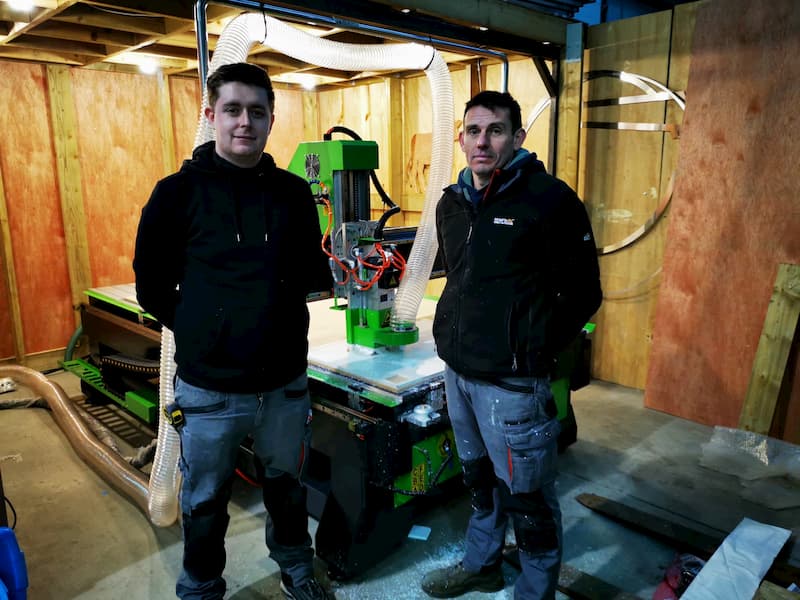
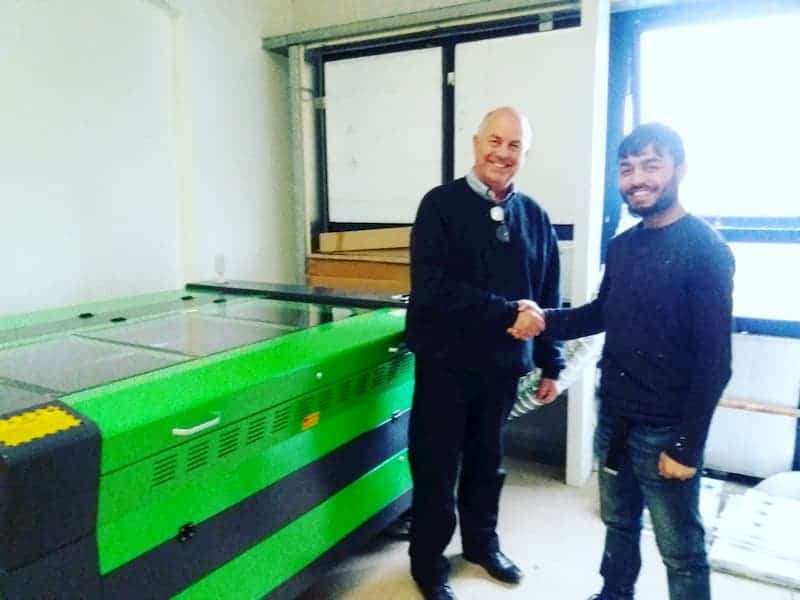
This isn’t as simple as it first seems. There are many factors that may sway your decision one way or the other.
As with most products, there are some cons to consider when choosing between CNC routers and CO2 Laser Machines. Let’s see what they are:
It’s safe to safe both types of machinery are a fantastic addition to your manufacturing arsenal. Which one you should be using for your needs relies on what your processes and restrictions may be within the workplace.
Do you want the versatility of a CNC router with the types of tooling you can use, or do you want the simplicity of a Laser cutter? Do you have noise restrictions in the workplace area it will be used in?
Most of the time a CNC router will be able to process jobs faster than a CO2 Laser but you are required to hold a number of different cutters as opposed to only having the one source for cutting and engraving on a laser machine.
There is also the use case for using both machines in the workplace should your manufacturing requirements need it. That way you get the best of both worlds, but, it can come down to individual business needs or need to produce a particular type of product.
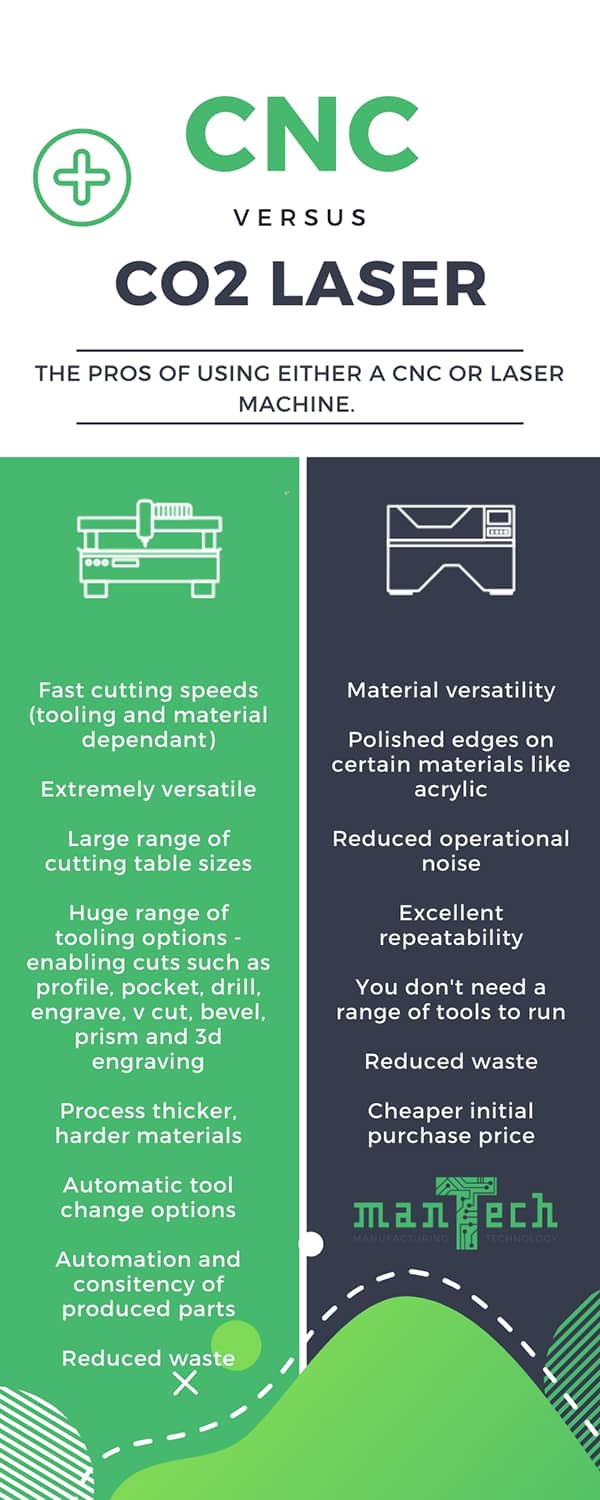
Here at Mantech Machinery UK, we can help you make a decision based on our expert knowledge in the industry, looking at your business needs as to what may or may not be the best route to take when choosing a machine. We also offer all of our CNC and Laser machines on finance, please ask for details.
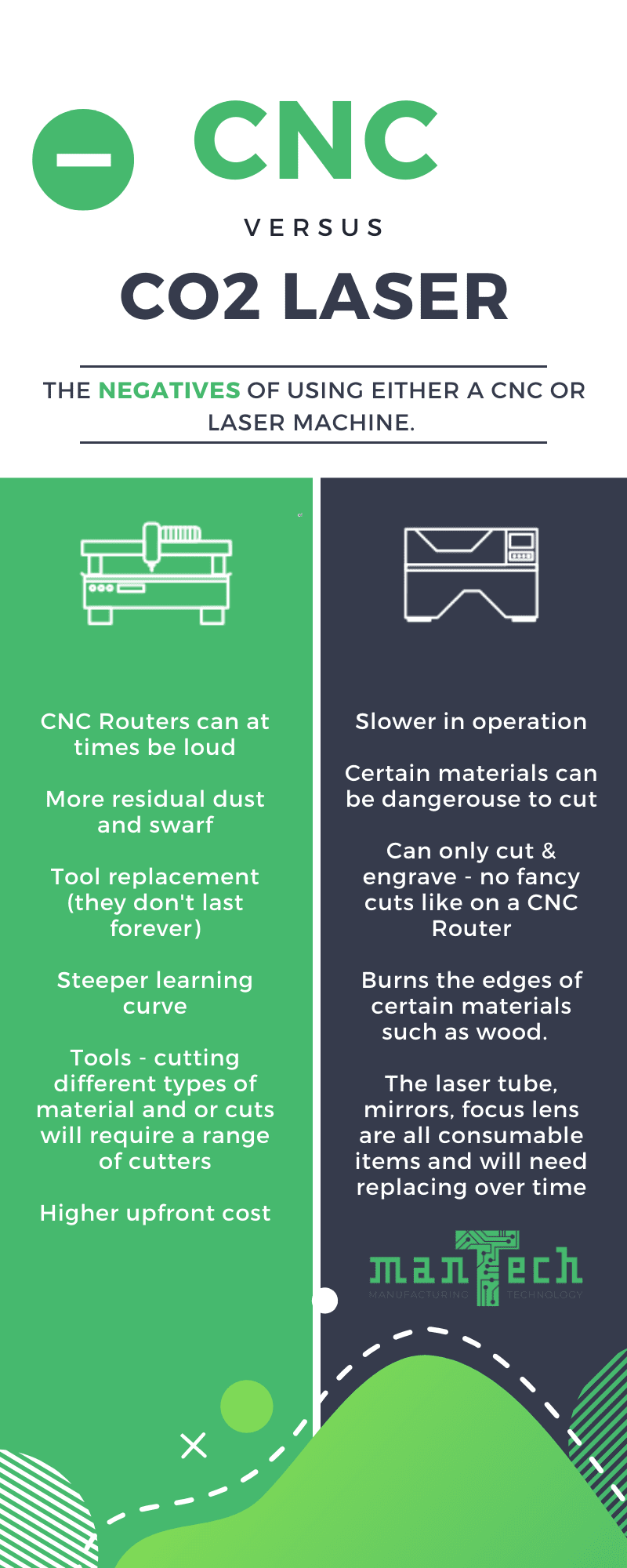
Our range of CNC routers consists of Merlin CNC Routers, Apollo ATC (auto tool change) CNC and our Entry Level range of CNC.